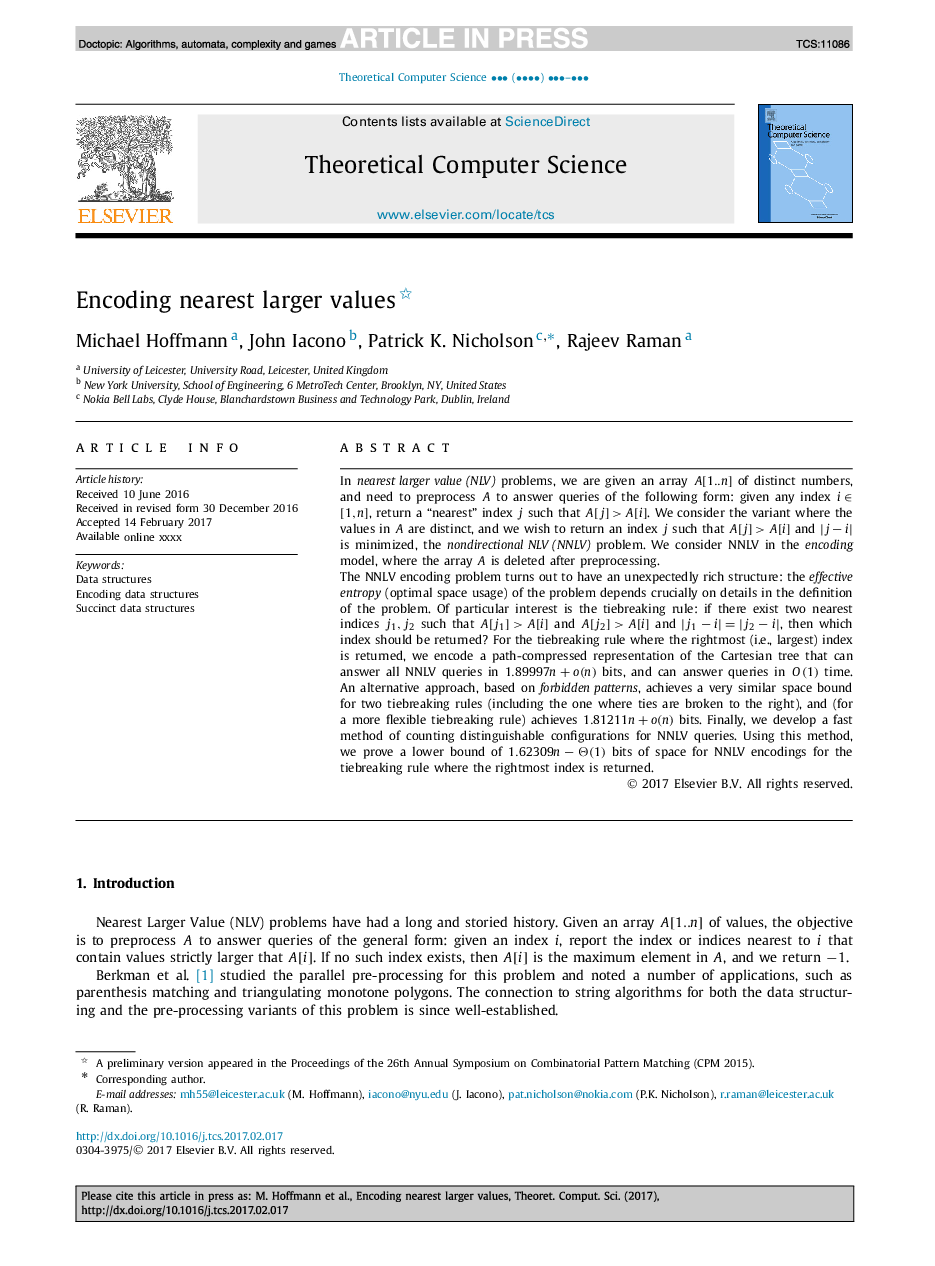| Article ID | Journal | Published Year | Pages | File Type |
|---|---|---|---|---|
| 6875676 | Theoretical Computer Science | 2018 | 19 Pages |
Abstract
The NNLV encoding problem turns out to have an unexpectedly rich structure: the effective entropy (optimal space usage) of the problem depends crucially on details in the definition of the problem. Of particular interest is the tiebreaking rule: if there exist two nearest indices j1,j2 such that A[j1]>A[i] and A[j2]>A[i] and |j1âi|=|j2âi|, then which index should be returned? For the tiebreaking rule where the rightmost (i.e., largest) index is returned, we encode a path-compressed representation of the Cartesian tree that can answer all NNLV queries in 1.89997n+o(n) bits, and can answer queries in O(1) time. An alternative approach, based on forbidden patterns, achieves a very similar space bound for two tiebreaking rules (including the one where ties are broken to the right), and (for a more flexible tiebreaking rule) achieves 1.81211n+o(n) bits. Finally, we develop a fast method of counting distinguishable configurations for NNLV queries. Using this method, we prove a lower bound of 1.62309nâÎ(1) bits of space for NNLV encodings for the tiebreaking rule where the rightmost index is returned.
Related Topics
Physical Sciences and Engineering
Computer Science
Computational Theory and Mathematics
Authors
Michael Hoffmann, John Iacono, Patrick K. Nicholson, Rajeev Raman,
